|
This image of a breeding plumage Roseate Spoonbill was created at 7:55 am with the with the tripod-mounted Canon 800mm f/5.6L IS lens and the Canon EOS-1D Mark IV. ISO 400. Evaluative metering -1/3 stops as framed: 1/800 sec. at f/5.6 in Manual mode. Central Sensor/AI Servo Rear Focus on the bird’s lower breast active at the moment of exposure. Click here if you missed the Rear Focus Tutorial. Click on the image to enjoy a larger version. This bird had sneaked out of the mangroves to my right; I would have missed the shot had James not alerted me. Thanks Froggie! |
A Bad Morning on the Hooptie Deux is Still a Pretty Darned Good Morning
By the time that I got to the dock with the repair gear James was already there; he had jury-rigged a repair with a plastic bag and some zipper wax and limped back to the boat ramp. In short order the job was done. I loaded my gear and we were underway. It was a clear morning with a breeze from the southeast. The wind was from the perfect direction for flight photography but as the sun rose the breeze freshened to about 20 knots. Instead of landing on the flat in front of us as we had so carefully planned the spoonies and large numbers of White Ibises landed in the more sheltered cove to our left where we were unable to get our lenses on them. So we settled for a great morning of flight photography albeit without as many chances for Roesate Spoonbills as you would expect on a typical late March morning.
|
This tight-in-the-frame flight image of a Roseate Spoonbill was created at 8:35am with the with the tripod-mounted Canon 800mm f/5.6L IS lens and the Canon EOS-1D Mark IV. ISO 400. Evaluative metering +2 stops off the light blue sky: 1/2000 sec. at f/5.6 in Manual mode. Central Sensor/AI Servo Rear Focus active at the moment of exposure. Click here if you missed the Rear Focus Tutorial. Click on the image to enjoy a larger version. |
This image was a result of my taking a more aggressive approach to flight and action photography; in the past, I would have passed on this opportunity figuring that I would not be able to fit the whole bird in the frame. See here for details on that. I will share the original with you in the next blog post. I moved the bird back in the frame using APTATS II techniques and darkened the sky using Viveza with Control Points.
|
This breeding plumage Brown Pelican image was created at 8:44am with the tripod-mounted Canon 800mm f/5.6L IS lens and the Canon EOS-1D Mark IV. ISO 400. Evaluative metering +2 stops off the light blue sky: 1/1600 sec. at f/5.6 in Manual mode. Central Sensor/AI Servo Rear Focus active at the moment of exposure. Click here if you missed the Rear Focus Tutorial. Click on the image to enjoy a larger version. |
When the wind direction is right and the pelicans are coming in with their landing gear down, press and hold the shutter button to ensure a variety of poses. Detail Extractor and Tonal Contrast both at 50% with NIK Color Efex Pro on the bird only (selected with the Quick Selection Tool).
|
This incoming American Oystercatcher was photographed at 9:12am with the tripod-mounted Canon 800mm f/5.6L IS lens and the Canon EOS-1D Mark IV. ISO 400. Evaluative metering +1 2/3 stops off the light blue sky: 1/2000 sec. at f/5.6 in Manual mode. Central Sensor/AI Servo Rear Focus active at the moment of exposure. Click here if you missed the Rear Focus Tutorial. Click on the image to enjoy a larger version. |
This species almost always alerts you to their presence with their strident flight calls. As is usual this bird, one of a fly-by pair, announced itself long before flying into photographic range. Long lens flight photography tip: make sure that your distance range limit switch is set to far focus only so that the lens does not have to search all the way down to minimum focusing distance. This drastically reduces the time needed for initial focusing acquisition.
|
This small-in-the-frame/environmental image was created at 7:46am with the tripod-mounted Canon 800mm f/5.6L IS lens and the Canon EOS-1D Mark IV. ISO 1600. Evaluative metering +2 1/3 stops off the sky (-1 stop as framed): 1/640 sec. at f/5.6 in Manual mode. Central Sensor/AI Servo Rear Focus on the White Ibis and recompose. Click here if you missed the Rear Focus Tutorial. Click on the image to enjoy a larger version. |
I was set up for early morning flight photography when I noticed the ibis walking by the lone spoonbill. I rear focused on the ibis, swung the lens to the left, and when the compositional balance was pretty close to perfect fired off two frames. The Small-in-the-Frame/Environmental category is one of the weakest in the BIRDS AS ART 1st International Bird Photography Competition. The deadline is coming up soon; If you have some great small in the frame habitat images be sure to enter for a chance at some of the great prizes in the $22,000+ prize pool and lots of honor and glory as well :). For lots more info see “The Contest Heats Up.” Item 1 here.
|
This image of a breeding plumage Brown Pelican carrying nesting material was created at 8:13am with the tripod-mounted Canon 800mm f/5.6L IS lens and the Canon EOS-1D Mark IV. ISO 400. Evaluative metering +2 2/3 stops off the very light blue sky: 1/800 sec. at f/5.6 in Manual mode. Central Sensor/AI Servo Rear Focus active at the moment of exposure. Click here if you missed the Rear Focus Tutorial. Click on the image to enjoy a larger version. |
About half the flying pelicans were carrying nesting material and with the south/southeast wind flight photography was superb. By studying the exposure data and the time that each image was made you can learn that as the morning wore on it was correct to add less and less light to the exposure reading off the sky.
Comments Welcome
Please feel free to leave a comment on all or any of the above. If you have a favorite, be sure to let us know why you like it.
James Shadle and the Hooptie Deux
I am always amazed when folks who visit Florida for the express purpose of photographing Roseate Spoonbill go home disappointed. To say that Ding Darling ain’t what it used to be is a vast understatement…. If you want to photograph lots of spoonbills all that you need to do is spend a few days with James Shadle on his photo-customized pontoon boat, the Hooptie Deux. Click here and scroll down for complete details and to see some of James’ incredible images from Alafia Banks.
James’ “In the Field Workshops” is the original Tampa Bay nature photography (by boat) workshop and tour leader. He has an exciting list of locations that will give you the opportunity to create incredible images of dramatic behavior and stunning plumages. He knows the bay better than anyone as he has been doing it longer than anyone and as the images show, he knows how to make great pictures and can teach you to do the same. James owns and operates a 20′ tri-toon boat (The Hooptie Deux) that has been customized specifically for photography workshops. It’s roomy, comfortable, and stable. The boat is equipped with a quiet and environmentally friendly E-Tec outboard motor. It also has a powerful, silent, electric trolling motor with wireless remote control. The boat can be configured with no top for on-board photography or with a bimini top to provide shelter from sun and rain. Refreshments are available at all times.
Call or e-mail in advance to inquire about dates and rates. You can get in touch with James for additional info or to schedule a Custom Workshop or Tour via e-mail, by cell phone at (813) 363-2854 or on his home phone (early evenings best) at (813-689-5307). If by cell phone it is best to call back rather than to leave a message.
If you plan on joining James make sure to read “Hooptie Deux Practicalities” by scrolling down here.
Earn Free Contest Entries and Support both the Bulletins and the Blog by making all your B & H purchases here.
More and more folks are earning multiple contest entries with their B & H purchases. See here for details on that. Eleven great categories, 34 winning and honored images, and prize pools valued in excess of $20,000. Click here to visit the competition home page.
Shopper’s Guide
Below is a list of gear that I used to create the image in this blog post. Thanks a stack to all who have used the Shopper’s Guide links to purchase their gear as a thank you for all the free information that we bring you on the Blog and in the Bulletins. Before you purchase anything be sure to check out the advice in our Shopper’s Guide.
Canon 800mm f/5.L IS lens. Right now this is my all time favorite super-telephoto lens.
Canon EF 1.4X III TC. This new TC is designed to work best with the new Series II super-telephoto lenses.
Canon EOS-1D Mark IV professional digital camera body. My two Mark IVs are my workhorse digital camera bodies.
And from the BAA On-line Store:
LensCoats. I have a LensCoat on each of my big lenses to protect them from nicks and thus increase their re-sales value. All my big lens LensCoat stuff is in Hardwood Snow pattern.
LegCoat Tripod Leg Covers. I have four tripods active and each has a Hardwood Snow LegCoat on it to help prevent further damage to my tender shoulders 🙂 And you will love them in mega-cold weather….
Gitzo GT3530LS Tripod. This one will last you a lifetime.
Mongoose M3.6 Tripod Head. Right now this is the best tripod head around for use with lenses that weigh less than 9 pounds. For heavier lenses, check out the Wimberley V2 head.
CR-80 Replacement Foot for Canon 800. When using the 800 on a Mongoose as I do, replacing the lens foot with this accessory lets the lens sit like a dog whether pointed up or down and prevents wind-blown spinning of your lens on breezy days by centering the lens directly over the tripod.
Double Bubble Level. You will find one in my camera’s hot shoe whenever I am not using flash.
The Lens Align Mark II. I use the Lens Align Mark II pretty much religiously to micro-adjust all of my gear an average of once a month and always before a major trip. Enjoy our free comprehensive tutorial here.
Canon EOS-1D Mark IV User’s Guide. Learn to use your Mark IV the way that I use mine. Also available for the 7D and the Mark III here.
BreezeBrowser. I do not see how any digital photographer can exist without this program.

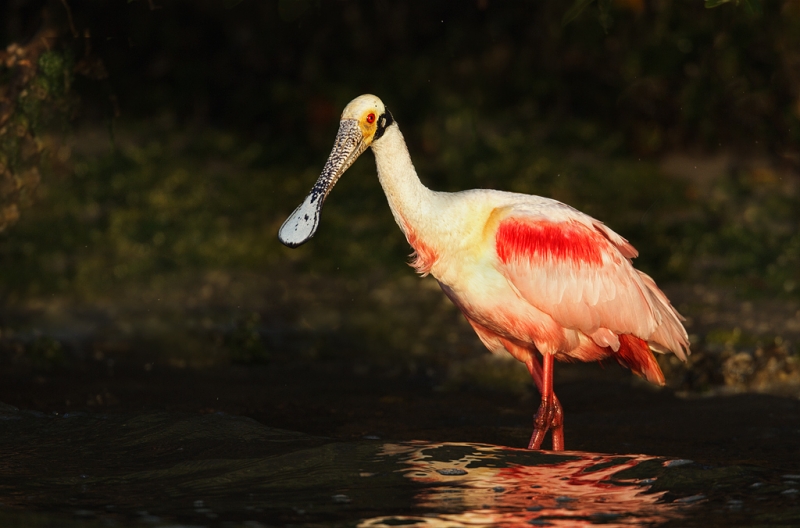
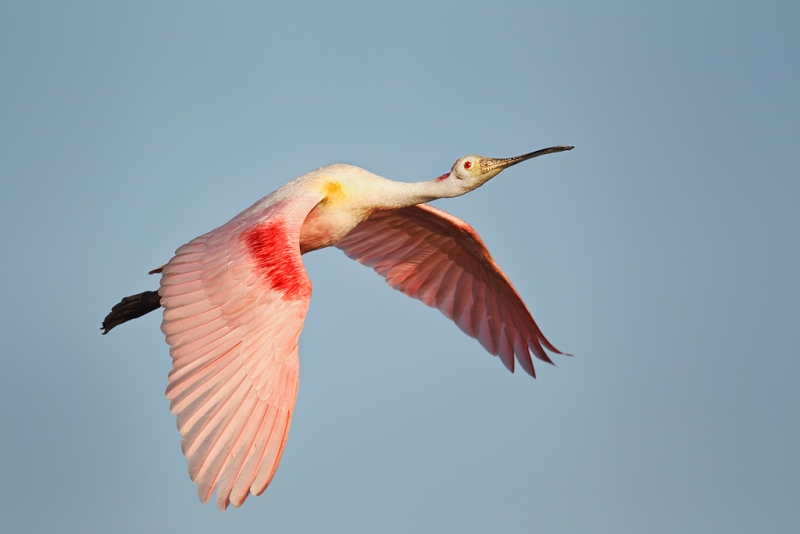
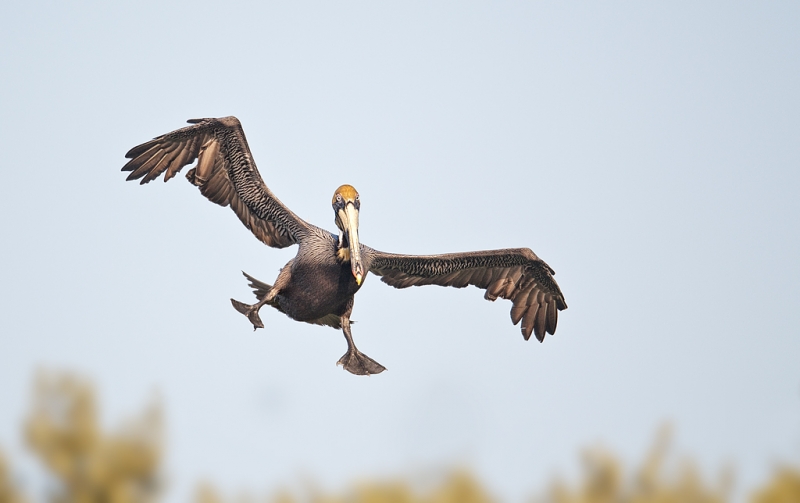
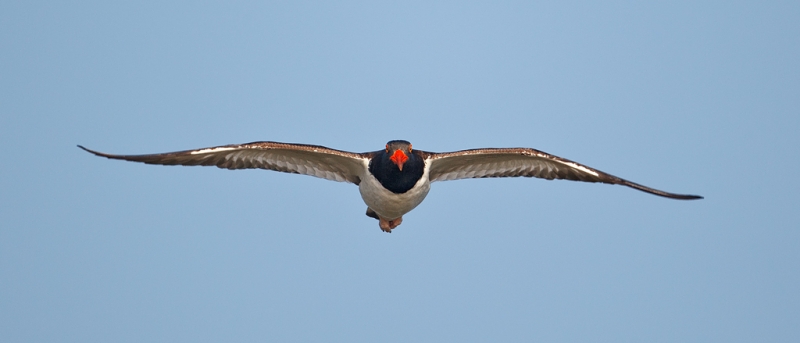
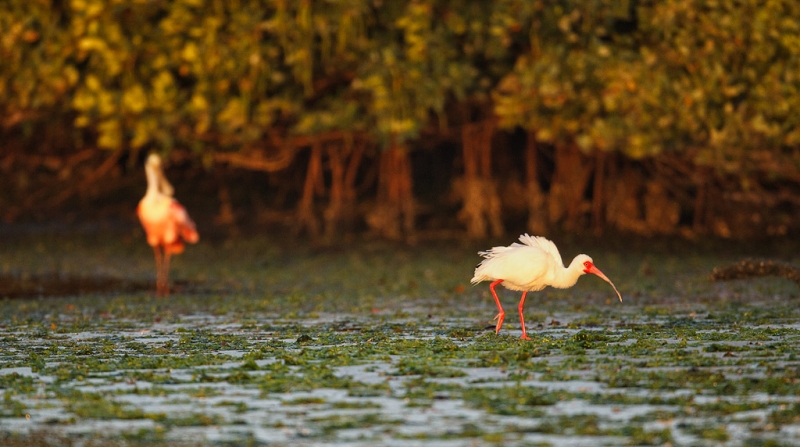
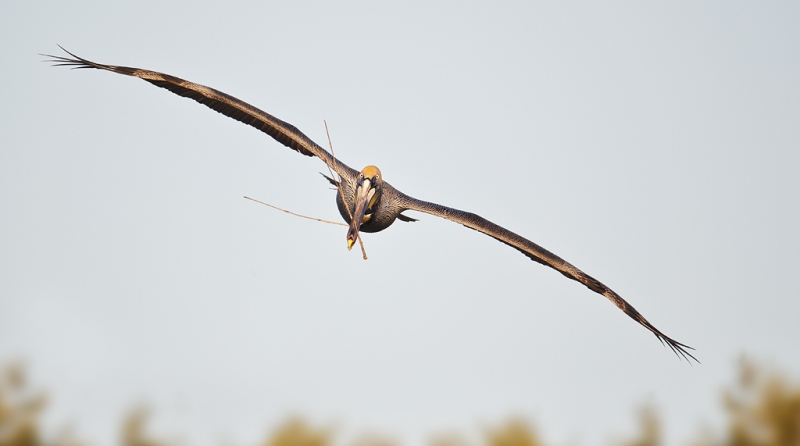













Artie,
It was a pleasure. A bad day on the Hooptie Deux ain’t all that bad.
I had good company onboard.
Very nice images once again Artie. I like the way the first bird’s bill tip looks like a worn out electric guitar. The wavelet that it’s about to walk through gives it a nice sense of movement too. The second is a popular image for yourself, but as it’s an in flight crop it’s well impressive, as are the others. I love the raggedy look of the Brown Pelican in No3, I can visualize the slightly ungainly ginking and adjustmenst it makes as it comes in to land. The Oystercatcher is fascinating, in that, you’ve managed to make it appear as a red billed Pigeon. The environmental image is top notch as a natural history record, and splendidly artistic into the bargain. And the thinned out front profile pelican with thin sticks for the nest is just very nice indeed. All birds have spent whole years effort to build up their energies for this breeding season, and the nest can be the crowning glory for many species.
Your comment re: Ding Darling is spot on. I live less than a mile away, and have averaged two to thee visits a week for last twenty-five years.
This year, seldom got my gear out of the car.
The “experts” are blaming the warm weather up North. .?
James, Unless you never visited the refuge in January, February, and March, you would be in a great position to realize that they place has been going steadily downhill as a premier photographic location since the entire decade of the 90s and even before…. So while this year may be lousier than the last few the place has been but a shadow of its former self for more than a decade. And even on a great day not it cannot compare to even a good day in the 90s….
Are you sure the roseate spoonbill photo was at 1/200? Seems very slow for a bird in flight, even a “big wing flapper”!
Thanks for catching that typo: should have been 1/2000 sec. It has been fixed.
Artie,
I am trying to decide which version of Color Efex Pro 4 to buy? Are you using NIK Color Efex Pro 4 Complete Edition in Photoshop or NIK Color Efex Pro 4 Select Edition in Lightroom? Which do you recommend? Will Select Edition work in Photoshop? It looks like the Complete Edition has 29 more filters than the Select Edition – are you using any of them with your bird photography? Thanks
Thanks John, I forgot to mention that I use the Complete Edition, the one with 55 filters; the two filters that I use, Tonal Contrast and Detail Extractor are only included in the more expensive edition. Everyone should order the Complete Edition here. Be sure to enter the BAA code in the Coupon Code box at checkout and then hit Apply to save 15% on all purchases (including upgrades).
Artie,
When you state settings for Color Efex settings like “Detail Extractor and Tonal Contrast both at 50%, is the 50% referring to 50% of the maximum slider travel (i.e. of full effect) or is it your opacity setting? Thanks!
Best
Glen Fox
Hi Glen, As stated in a previous tutorial, the Opacity setting. At times I do tweak the individual sliders in Tonal Contrast, usually moving the Highlights slider to the right to 0 to keep from brightening the WHITEs and/or the Midtones and Shadows sliders to the right to increase contrast a bit more.